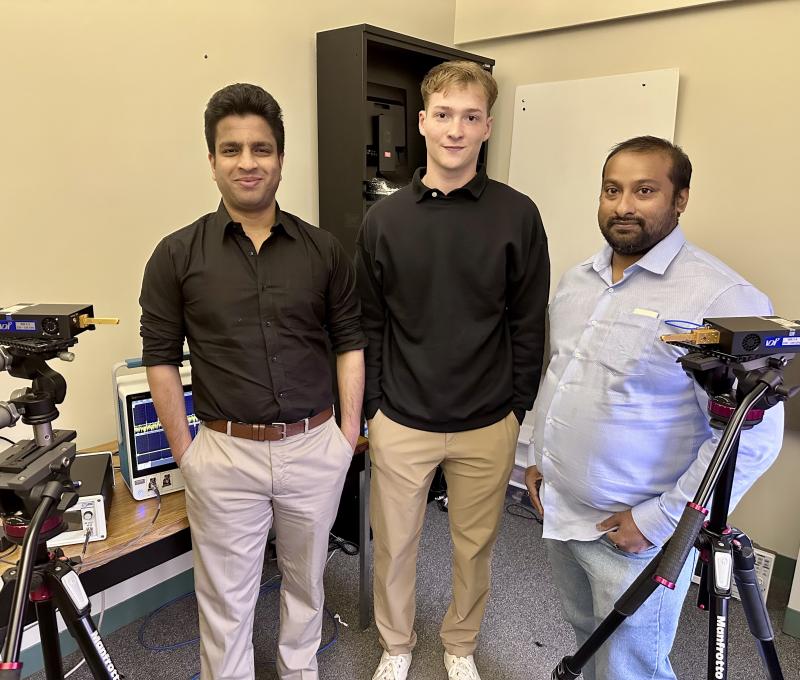Professor Fariborz Publishes Collaborative Research in the European Physical Journal

Professor Amir Fariborz published, “Chiral nonet mixing in πη scattering” in European Physical Journal C, in collaboration with researchers from University of Sistan and Baluchestan, Zahedan, Iran; and Shiraz University, Shiraz, Iran:
At this stage in the evolution of the Universe (about 14 billion years after the big bang) there are four fundamental forces in action that cause interactions among the constituents of matter. One of these forces is gravity that, for example, keeps us revolving around the Sun and be able to enjoy the four seasons. Another one is the electromagnetic force that benefits us every day. From the light bulb that we turn on every night to the dynamics of electrons inside our electronic devices, they are all driven by the electromagnetic force. The other two forces are not as commonly noticed in daily life, but this does not mean that they are any less important. These two forces are confined within the nucleus of atoms (distances around
The protons and neutrons are members of a large family of composite particles called hadrons, and they are all made of fundamental particles called quarks. The theory that describes the strong interaction of quarks is called Quantum Chromodynamics (QCD), according to which, the quarks engage in strong interaction by exchanging mediating particles called gluons. This is similar to how fundamental charged particles engage in electromagnetic interaction by exchanging photons in the theory of Quantum Electrodynamics (QED). However, there are some major differences between QCD and QED, such as, for example, the fact that photons cannot form bound states but gluons, in principle, can bound together and form composites called glueballs. Theoretical understanding of the formation and interactions of glueballs with quark matter, as well as their experimental detection, are ambitious objectives of formidable complexity. Despite several Nobel prizes in physics already awarded for the remarkable discoveries in particle physics related to QCD, some aspects remain open questions and have challenged the theoretical physics for many decades. This problem is recognized by the Clay Mathematics Institute (www.claymath.org) as one of the seven unsolved problems in mathematics, known as Millennium Problems in Mathematics: http://www.claymath.org/millennium-problems
The main research of A. Fariborz is on the strong interaction of quarks and their interactions with glueballs. Models developed by Fariborz and collaborators have been widely successful in describing experimental data and received noticeable citations in the literature. Further information about A. Fariborz’s research can be found at the Inspire high energy physics literature database.
In this recent paper published in The European Physical Journal C (A. Fariborz et al, Eur. Phys. J. C (2022) 82:1133, https://doi.org/10.1140/epjc/s10052-022-11103-4) the generalized linear sigma model of QCD (developed by Fariborz et al) is applied to the scattering of two special types of hadrons called pion (








